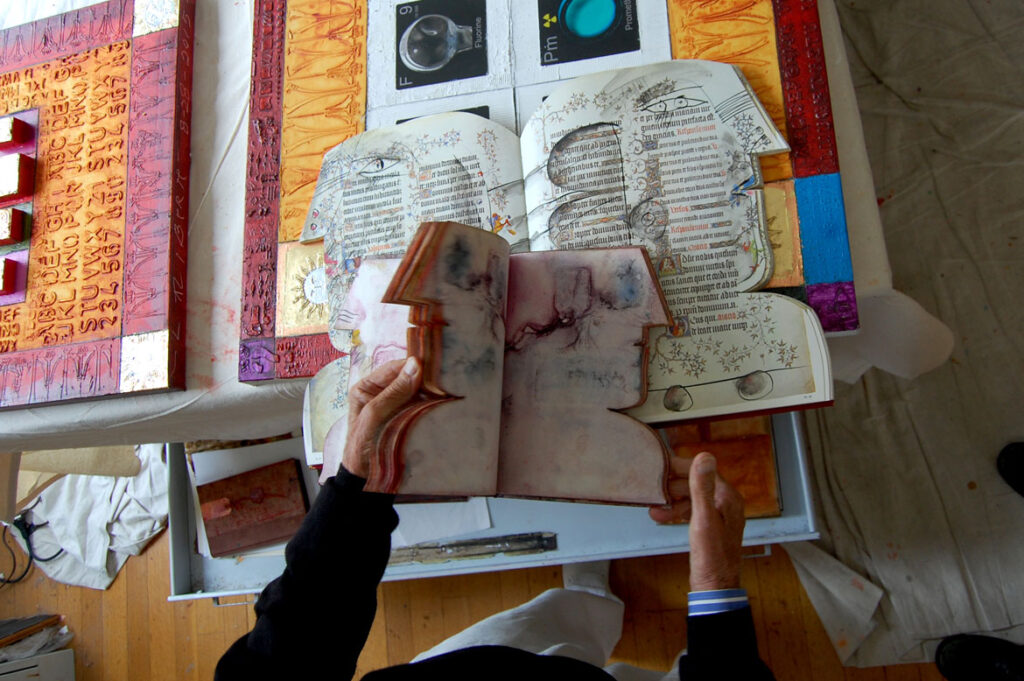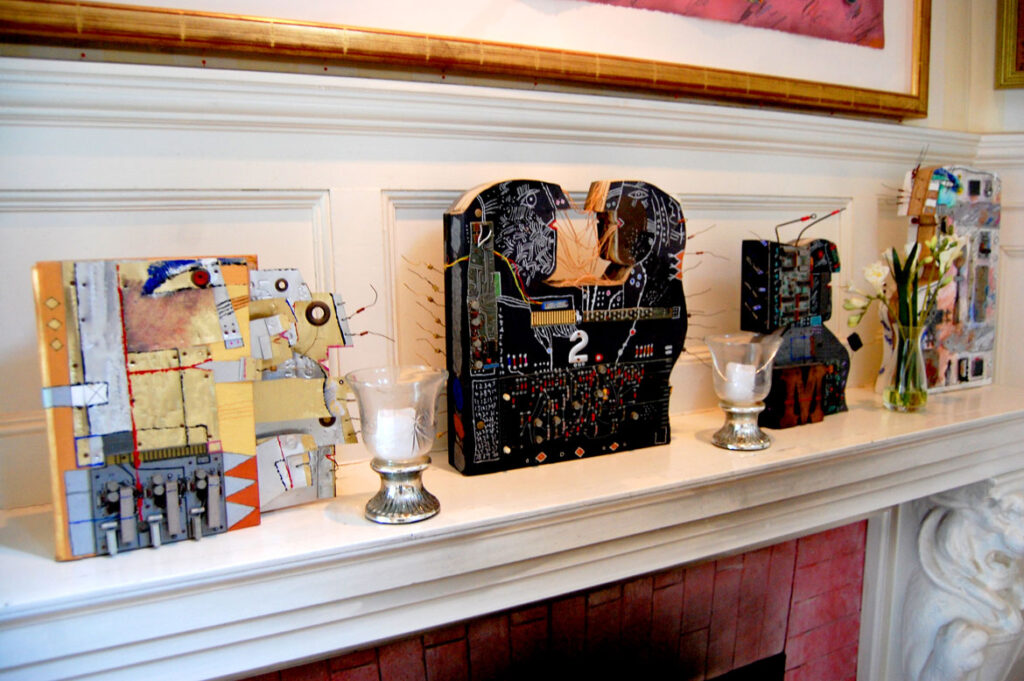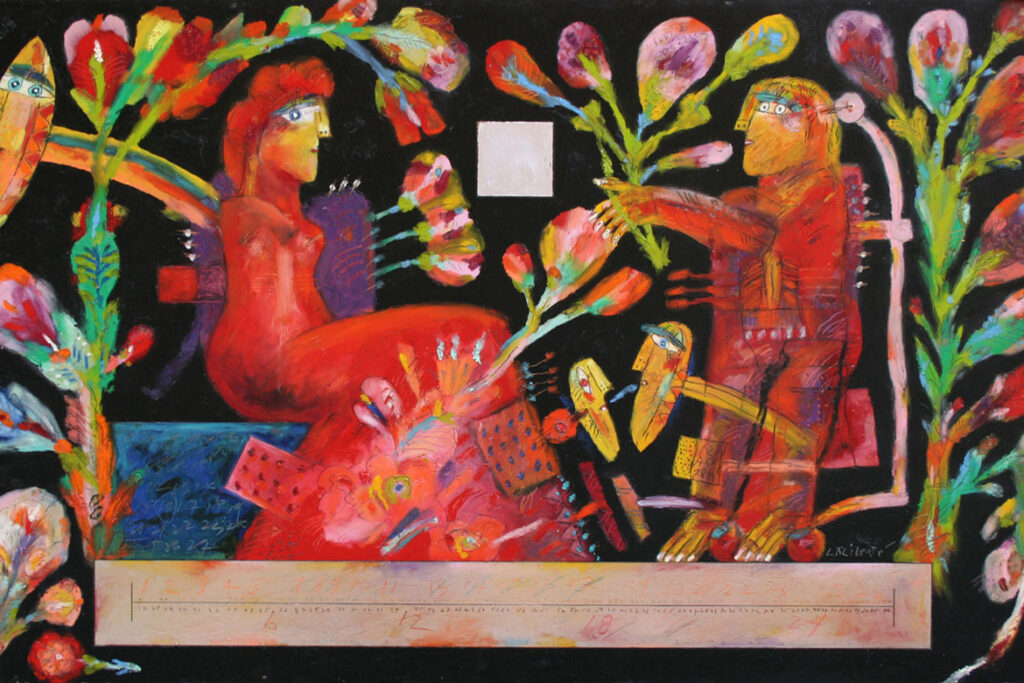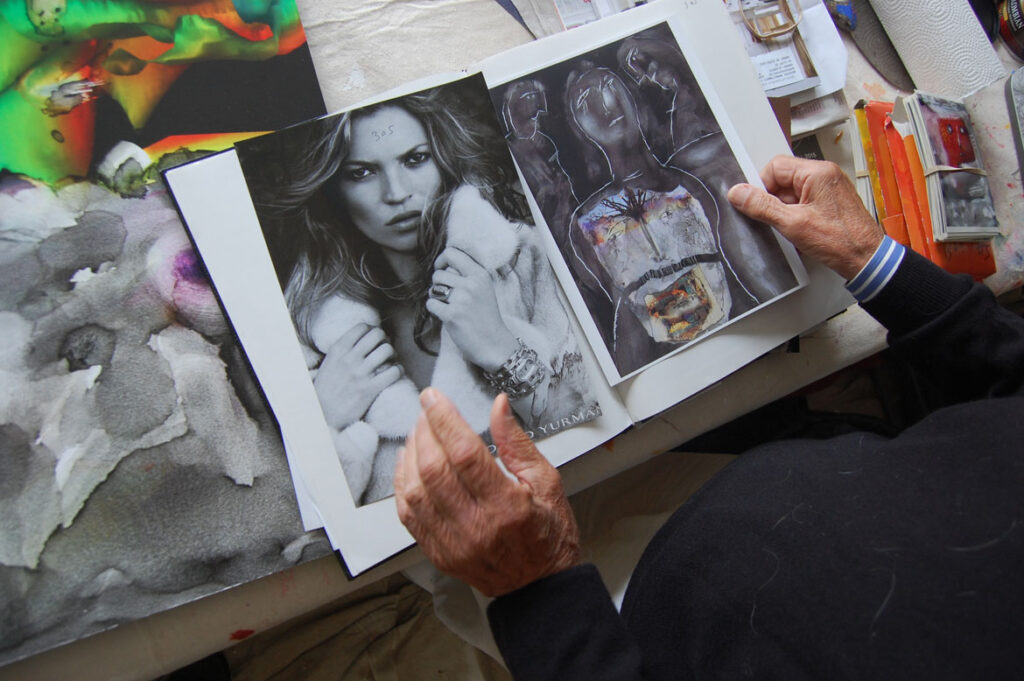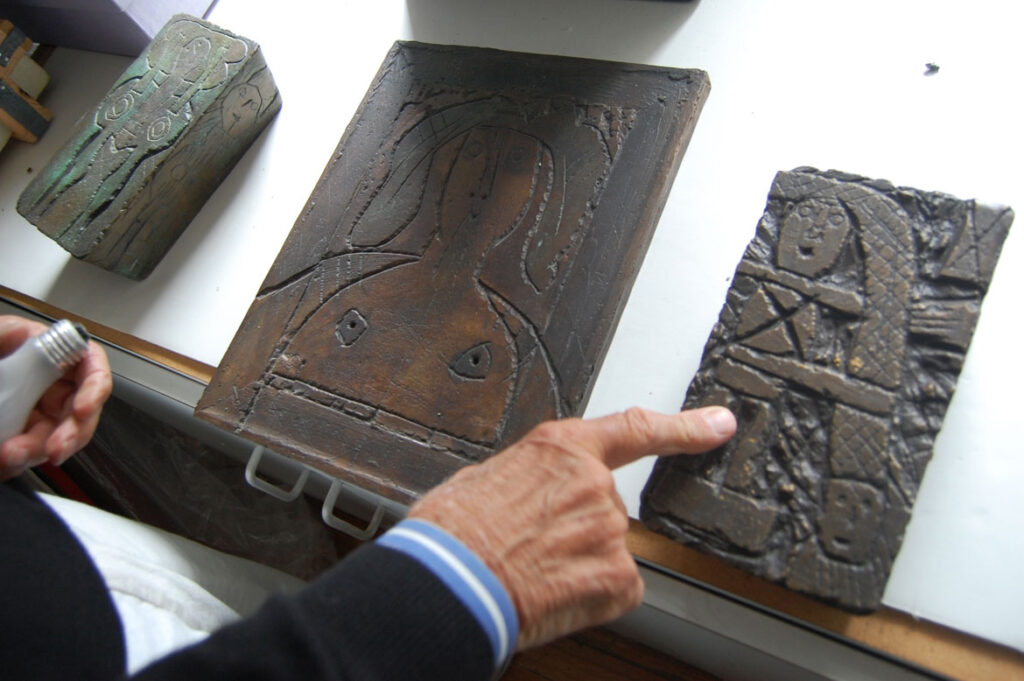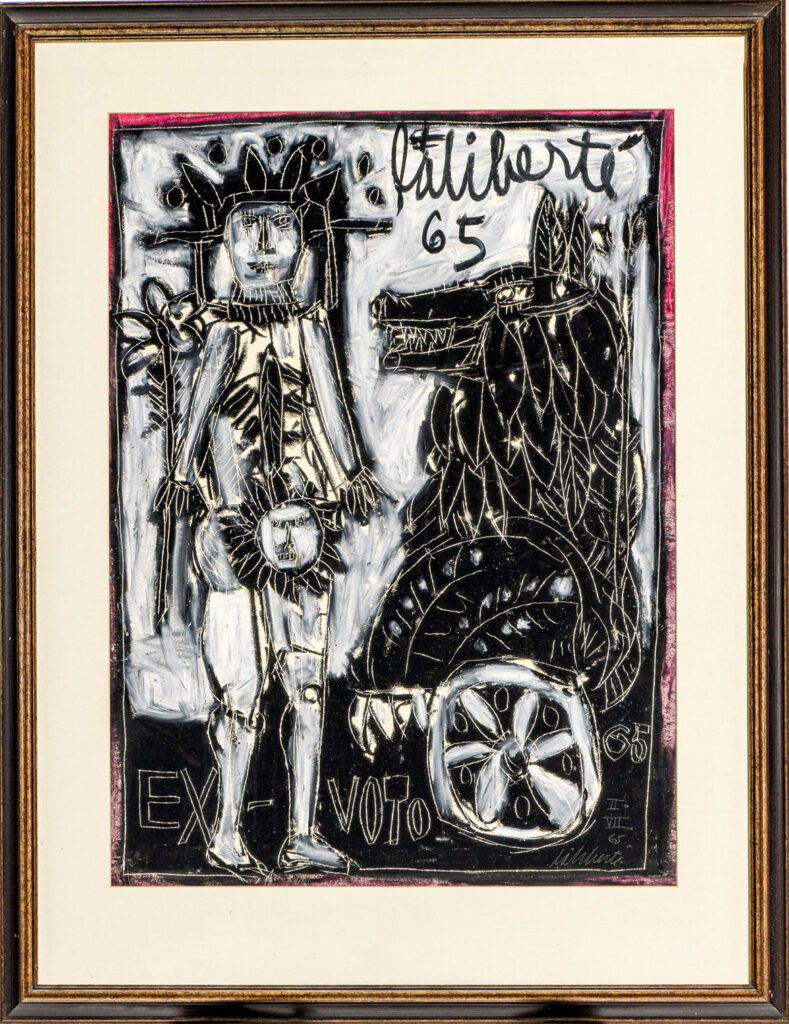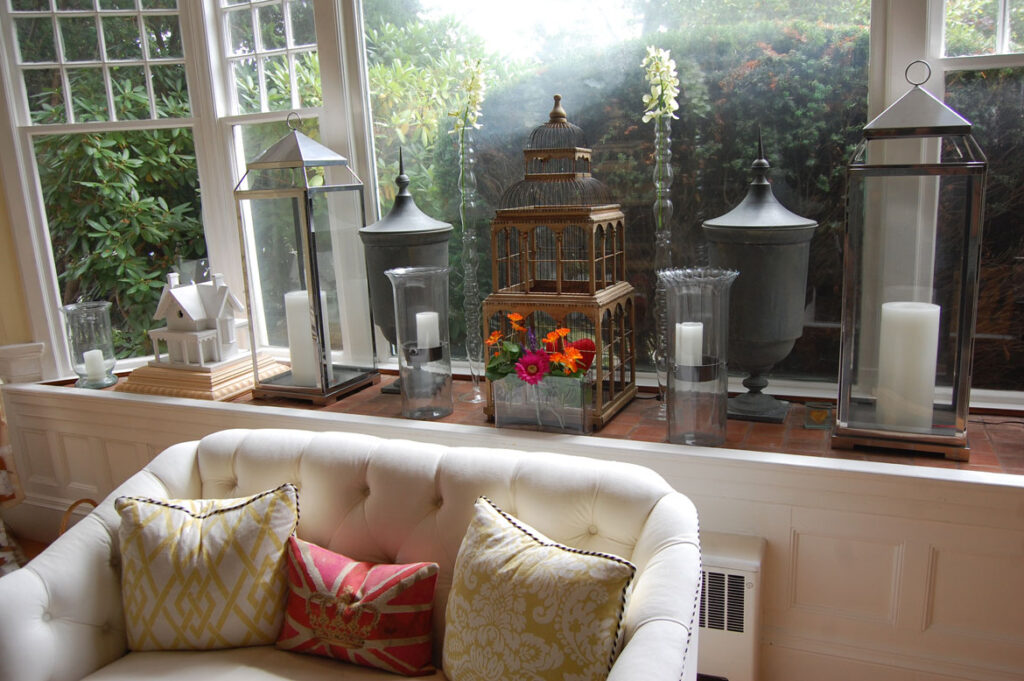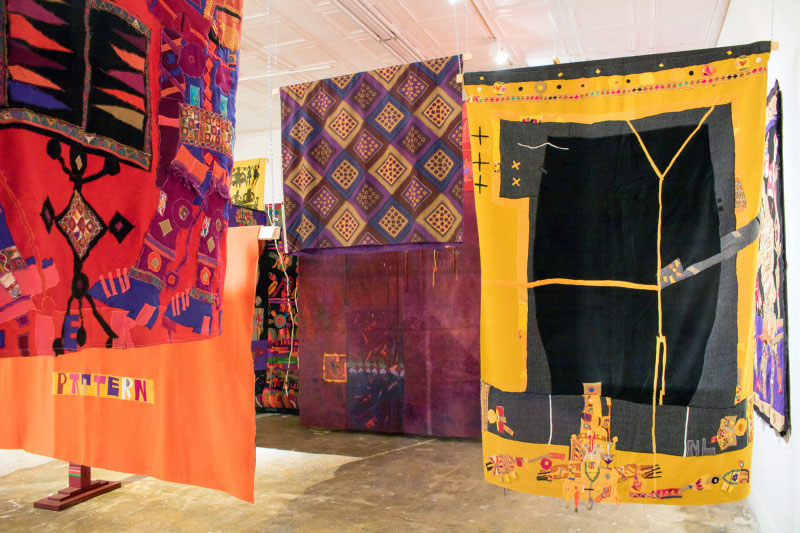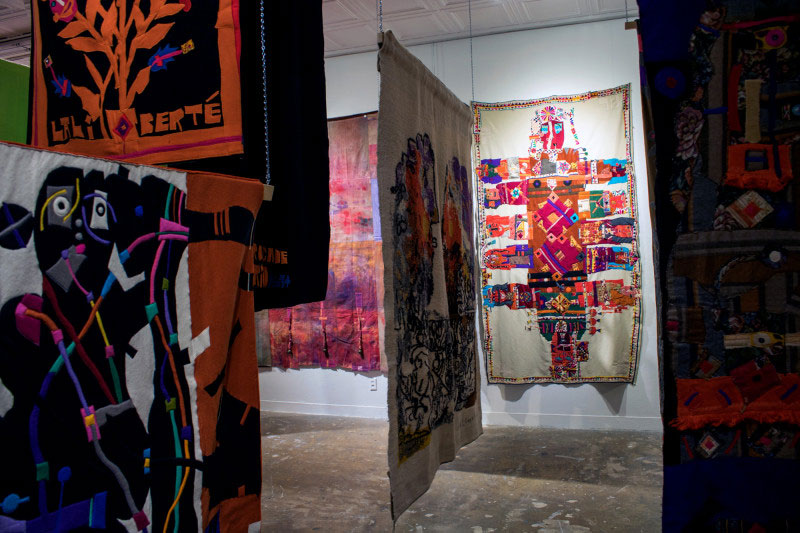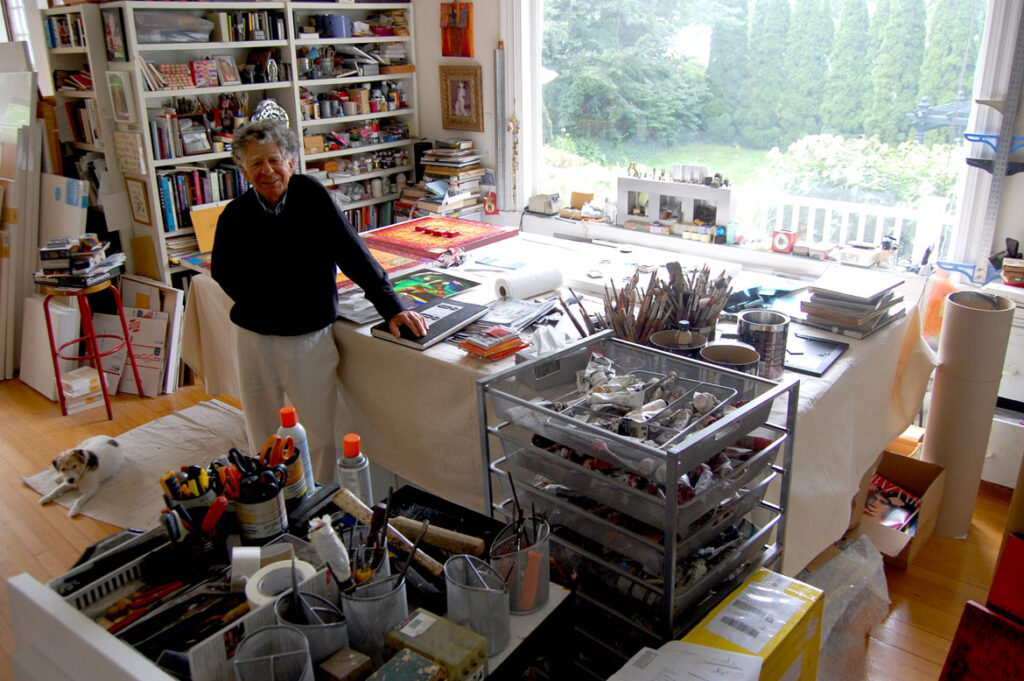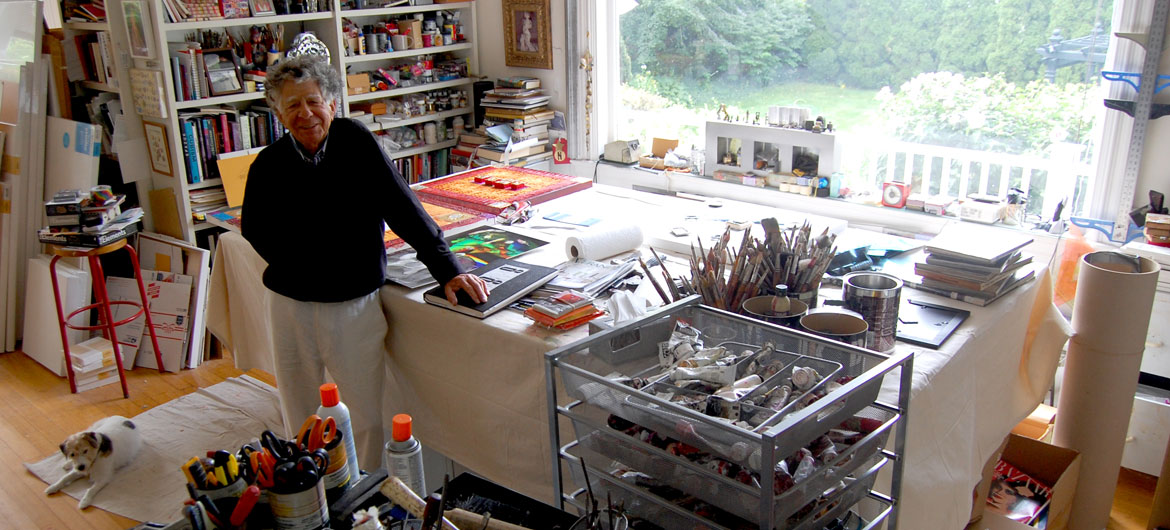“We’re not here to do what has already been done,” Norman Laliberte said in a 2017 interview with Squash House Media. “That’s the most important thing about art.”
Liberte, who died in his sleep at his Nahant home on Sept. 10 at age 95, created paintings, drawings and painted wood totems, but he was best known for his banners. Especially the 88 banners the Roman Catholic artist created for the Vatican Pavilion at the 1964 to ‘65 New York World’s Fair. His designs interpreted “Biblical events in an unconventional manner. Raw-edged, primitive forms cut from burlap. Wool or lace are appliqué on a cotton ground, about 4 by 15 feet, in brash, carnival-like colors,” The New York Times said in 1964.
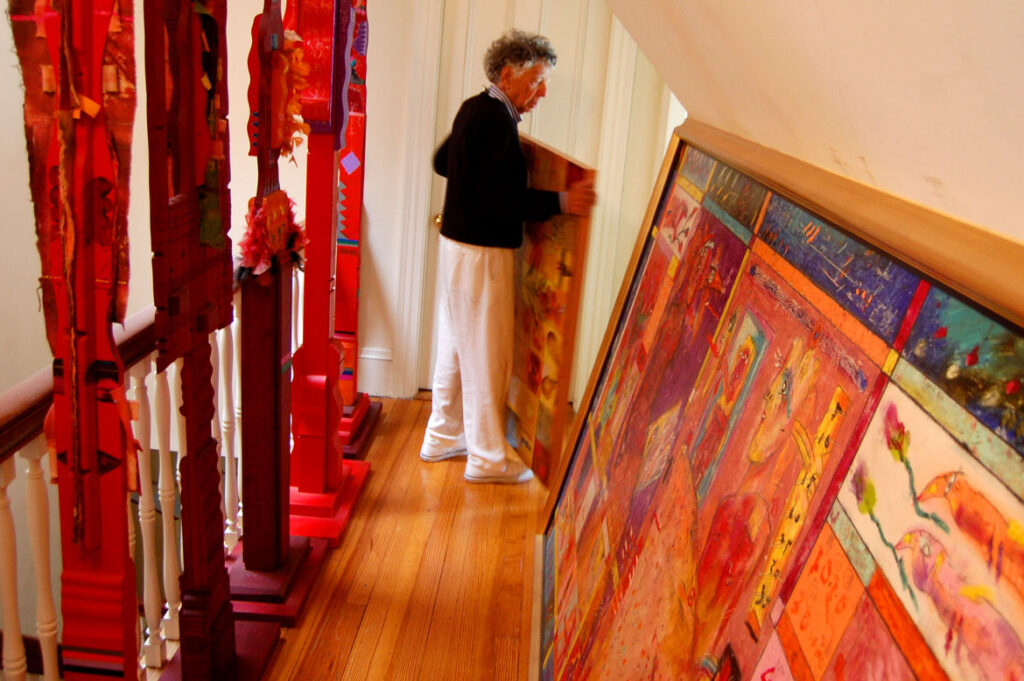
What set Laliberte’s work apart was the inspiration he drew from folk art, his Catholic faith, and those vivid colors. “I’m from Montreal, I lived there until I was 20,” Laliberte told The Salem News in 2013. “In Montreal, every painter painted in gray, because Montreal is gray. After leaving, it was almost like a revolution, I started using color.”
Laliberte cited the influences of Marc Chagall and Pablo Picasso. He was part of the zeitgeist of artists and designers in the 1950s and ‘60s who drew on folk art and Victorian era design. He also found ideas in ancient Egyptian, Greek, Etruscan and Aztec art.
“His unique form of abstract expressionism serves as a potent anti-depressant,” his son Kristian Laliberte wrote in the catalogue for a 2012 exhibition at Harbour Gallery in Mississauga, Canada, “animals, flowers and often sensual figures install viewers with uplifting feelings of joie de vivre.”
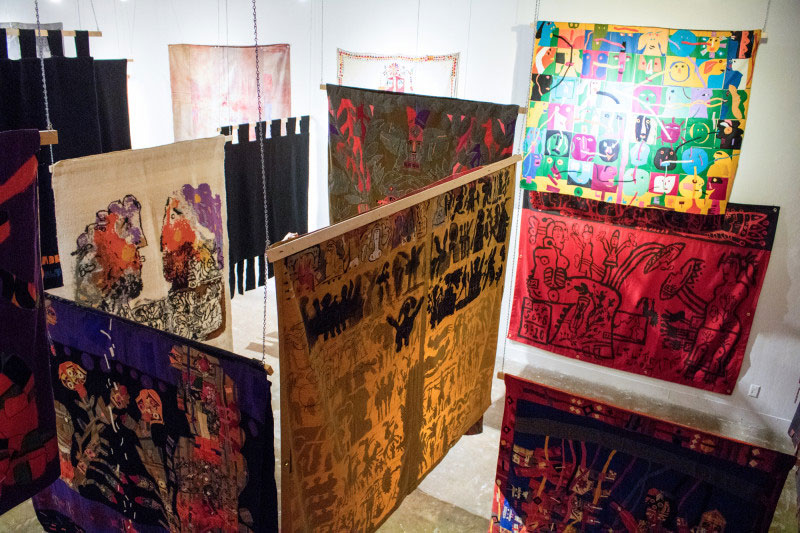
Laliberte spent the first year of his life in Worcester, but grew up speaking French in Montreal. He returned to Montreal when he was drafted by the U.S. Army during World War II, but was still in the United States when the war ended (“I didn’t have to kill anybody, and nobody got to kill me,” he told Wicked Local in 2013) but served for a year and a half in postwar Germany.
He would teach at Kansas City Art Institute, Boston College, Notre Dame and Rhode Island School of Design and publish dozens of how-to books—about woodcuts and stencils and ink drawing and masks and, of course, banners.
When Laliberte exhibited his religious drawings and paintings depicting the Archangel Michael casting devils into Hell, the Annunciation, and the Passion of Jesus at Boston’s Botolph Group Center for Religious Art in 1956, The Boston Globe’s Edgar Driscoll Jr. called it “a stunning” show “combining powerful personal expression with marked feeling and dedication to the timelessness of his themes.”
Responding to Laliberte’s 1959 Botolph exhibition of scenes of the Nativity and Adoration, Driscoll said Laliberte’s “approach more often than not is deliberately childlike. That he succeeds in bringing a child’s fresh view to these works along with adult drawing and color know-how of a high order is no small tribute to his artistry. … Ingenious and refreshing is the word for this one.” Laliberte continued to exhibit at Botolph gallery through the 1960s.
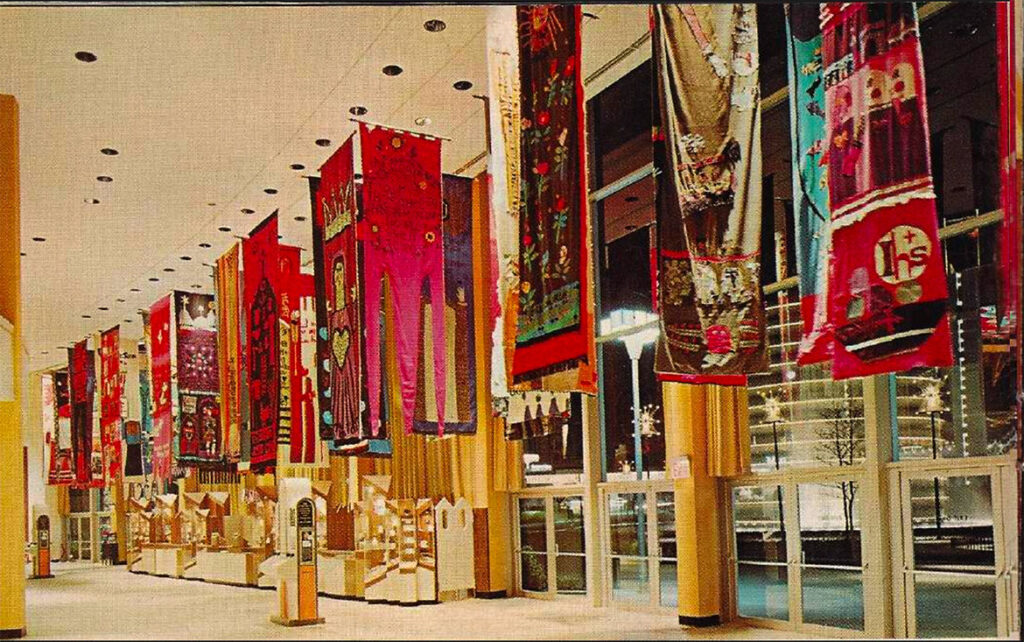
Architect and designer Charles Eames was apparently the first choice for the Vatican Pavilion at the New York World’s Fair in 1964 and ’65. But Eames was booked. But having “seen Mr. Laliberte’s religious paintings, drawings and banners at the Osborne Gallery, [Eames] suggested that the artist be engaged as design consultant for the Vatican Pavilion,” The New York Times reported in March 1965.
The art was intended to wrap around the star of the Vatican Pavilion: Michelangelo’s 1499 marble “Pieta.” Laliberte recruited RISD students to help him assemble his 88 banner designs. And he called in Sister Corita Kent to add her own art to the hall.
According the official guide book: “Suspended from the pavilion ceiling and seen from both the chapel and the main floor are 44 striking banners portraying symbolically the great feasts and other features of the liturgical year. Designed and produced under the direction of Norman Laliberte, the colorful banners are an interesting departure from the conventional.”
The high-profile Vatican project led to invitations to design games and decorations, to create tapestries for the lobby of 31-story New York office building. He went on to design banners for the headquarters of the New York State Bar Association in Albany in 1971, stained glass windows on the theme of the Bill of Rights for the New York State Supreme Court building in Albany, 25 “whimsical siłk banners” (according to The Boston Globe) for the lobby of a new Children’s Hospital building in Boston in 1987, and painted aluminum panels with New England motifs for Logan Airport’s international terminal.
Words on one of his brightly-colored drawings in his 1967 exhibition at Botolph could have been his motto: “The only intrinsic evil is lack of love.”
If this is the kind of coverage of arts, nature, cultures and activisms you appreciate, please support Wonderland by contributing to Wonderland on Patreon. And sign up for our free, (hopefully) weekly newsletter so that you don’t miss any of our reporting. (All content ©Greg Cook 2021 or the respective creators.)
